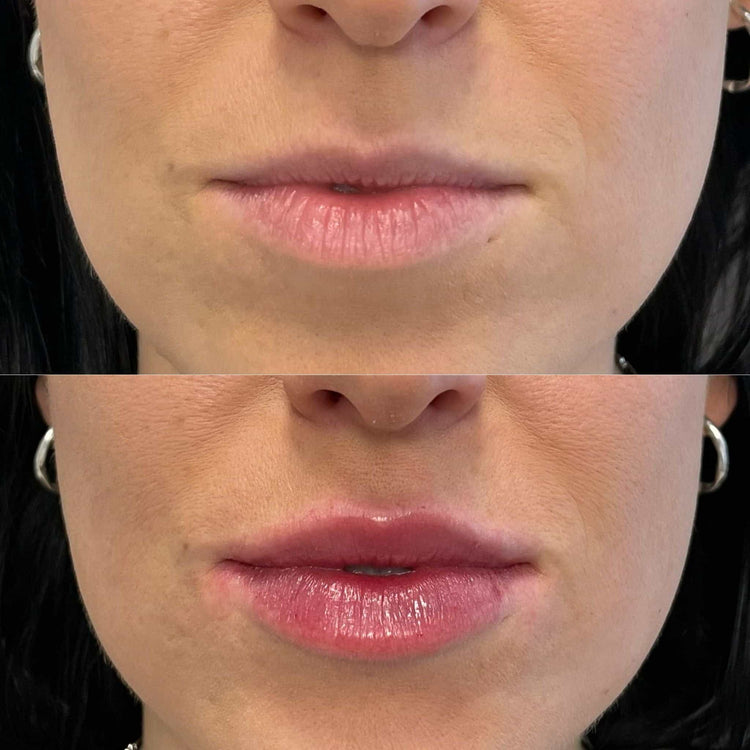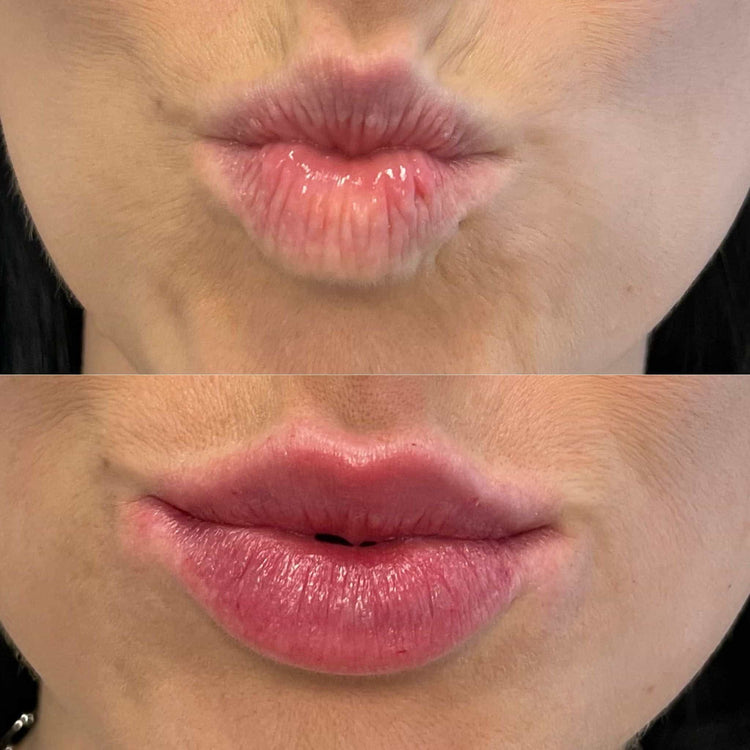Lip Shape Considerations
When considering lip fillers, it’s crucial to understand how different lip shapes will respond to the treatment. Some individuals may benefit from subtle enhancements, while others might require more dramatic changes. The natural shape of your upper and lower lips, as well as their size and symmetry, all play a role in determining which filler types and techniques are most suitable for achieving desired results.
Ideal Candidates
Fuller lips tend to be more voluminous and have a higher cupid’s bow, while thinner lips may appear smaller with less definition. People with naturally thin lips might see a more dramatic change from fillers, as the volume addition can significantly enhance their shape and appearance. Conversely, those with fuller lips might opt for subtle enhancements to further refine their contours or add fullness in specific areas.
Ideal candidates for lip fillers generally have good skin elasticity, which allows for smoother filler integration and a more natural-looking result. Individuals seeking to correct asymmetry, define the cupid’s bow, enhance volume, or simply add definition to their lips may find lip fillers a suitable option.

Less Suitable Lip Shapes

While lip fillers can be transformative, certain lip shapes might pose unique challenges. Thin lips with little definition can sometimes make it difficult to achieve precise placement and symmetry. Overfilling can lead to an unnatural or “duck lip” appearance.
Individuals with a naturally flat cupid’s bow might find it harder to create a pronounced arch, potentially requiring more extensive filler placement. Additionally, people with very large lips may experience difficulties finding a balance between augmentation and maintaining their natural proportions.
The Impact of Lip Fillers on Different Lip Shapes
Lip fillers have become increasingly popular for enhancing lip shape and volume. However, it’s crucial to understand that different lip shapes will respond differently to this treatment. Factors such as the size, symmetry, and natural definition of the lips all play a role in determining the best approach for achieving desired results.
Small Lips
When considering lip fillers, it’s crucial to understand how different lip shapes will respond to the treatment. Some individuals may benefit from subtle enhancements, while others might require more dramatic changes. The natural shape of your upper and lower lips, as well as their size and symmetry, all play a role in determining which filler types and techniques are most suitable for achieving desired results.
Fuller lips tend to be more voluminous and have a higher cupid’s bow, while thinner lips may appear smaller with less definition. People with naturally thin lips might see a more dramatic change from fillers, as the volume addition can significantly enhance their shape and appearance. Conversely, those with fuller lips might opt for subtle enhancements to further refine their contours or add fullness in specific areas.
Individuals seeking to correct asymmetry, define the cupid’s bow, enhance volume, or simply add definition to their lips may find lip fillers a suitable option.
While lip fillers can be transformative, certain lip shapes might pose unique challenges. Thin lips with little definition can sometimes make it difficult to achieve precise placement and symmetry. Overfilling can lead to an unnatural or “duck lip” appearance.
Individuals with a naturally flat cupid’s bow might find it harder to create a pronounced arch, potentially requiring more extensive filler placement. Additionally, people with very large lips may experience difficulties finding a balance between augmentation and maintaining their natural proportions.
Full Lips
Fuller lips are characterized by their volume and a well-defined cupid’s bow. When considering lip fillers, individuals with fuller lips might aim for subtle enhancements rather than drastic changes. They may choose to refine the contours of their lips, add fullness in specific areas like the corners or cupid’s bow, or balance any minor asymmetries.
The goal is often to enhance their natural beauty and create a more balanced and harmonious appearance, rather than making a dramatic transformation.
Thin Lips
People with naturally thin lips can experience a significant change in lip shape and appearance through fillers. Adding volume can dramatically enhance definition, create a fuller look, and bring balance to facial features.
However, careful consideration is needed during the procedure. It’s important to avoid overfilling, as this can lead to an unnatural or “duck lip” appearance, especially on thinner lips where subtle changes are more impactful.
Overly Large Lips
Fuller lips are characterized by their volume and a well-defined cupid’s bow. When considering lip fillers, individuals with fuller lips might aim for subtle enhancements rather than drastic changes. They may choose to refine the contours of their lips, add fullness in specific areas like the corners or cupid’s bow, or balance any minor asymmetries.
The goal is often to enhance their natural beauty and create a more balanced and harmonious appearance, rather than making a dramatic transformation.
People with naturally thin lips can experience a significant change in lip shape and appearance through fillers. Adding volume can dramatically enhance definition, create a fuller look, and bring balance to facial features.
However, careful consideration is needed during the procedure. It’s important to avoid overfilling, as this can lead to an unnatural or “duck lip” appearance, especially on thinner lips where subtle changes are more impactful.
Considerations Beyond Shape
The pursuit of fuller, more defined lips has led many to explore the possibilities of lip fillers. However, it’s essential to recognize that the impact of these treatments can vary greatly depending on an individual’s unique lip shape and characteristics.
Individual Skin Type and Texture
Beyond shape, individual skin type and texture also play a crucial role in determining the outcome of lip filler procedures. Skin elasticity is a key factor, as it influences how well the filler integrates and maintains its shape over time. Individuals with naturally elastic skin tend to see smoother results with less risk of visible lumps or bumps. Conversely, those with less elastic skin may require more careful placement and possibly different types of fillers to achieve optimal integration.
Skin texture can also impact the appearance of lip fillers. People with smooth, even skin will likely experience a more seamless result. However, individuals with rougher or textured skin might see filler irregularities more prominently. In such cases, pre-treatment skincare regimens and techniques like micro-needling can be beneficial to improve skin texture and enhance filler integration.
Desired Outcome
Beyond the shape of the lips themselves, other factors play a crucial role in determining how lip fillers will look and last. Skin type and elasticity are key considerations. Those with naturally elastic skin tend to see smoother results as the filler integrates more easily and maintains its shape over time.
Conversely, individuals with less elastic skin may need more careful placement of the filler and potentially different types of fillers to achieve optimal integration and minimize the risk of visible lumps or bumps.
Skin texture also influences the outcome. Smooth, even skin allows for a seamless integration of the filler, while rougher or textured skin might highlight any irregularities. Pre-treatment skincare regimens and techniques like micro-needling can help improve skin texture and enhance the appearance of lip fillers.
Medical History and Allergies
Fuller lips are characterized by their volume and a well-defined cupid’s bow. When considering lip fillers, individuals with fuller lips might aim for subtle enhancements rather than drastic changes. They may choose to refine the contours of their lips, add fullness in specific areas like the corners or cupid’s bow, or balance any minor asymmetries.
The goal is often to enhance their natural beauty and create a more balanced and harmonious appearance, rather than making a dramatic transformation.
- People with naturally thin lips can experience a significant change in lip shape and appearance through fillers. Adding volume can dramatically enhance definition, create a fuller look, and bring balance to facial features.
- However, careful consideration is needed during the procedure. It’s important to avoid overfilling, as this can lead to an unnatural or “duck lip” appearance, especially on thinner lips where subtle changes are more impactful.
Beyond shape, individual skin type and texture also play a crucial role in determining the outcome of lip filler procedures. Skin elasticity is a key factor, as it influences how well the filler integrates and maintains its shape over time. Individuals with naturally elastic skin tend to see smoother results with less risk of visible lumps or bumps. Conversely, those with less elastic skin may require more careful placement and possibly different types of fillers to achieve optimal integration.
Skin texture can also impact the appearance of lip fillers. People with smooth, even skin will likely experience a more seamless result. However, individuals with rougher or textured skin might see filler irregularities more prominently. In such cases, pre-treatment skincare regimens and techniques like micro-needling can be beneficial to improve skin texture and enhance filler integration.
The pursuit of fuller, more defined lips has led many to explore the possibilities of lip fillers. However, it’s essential to recognize that the impact of these treatments can vary greatly depending on an individual’s unique lip shape and characteristics.
Beyond shape, individual skin type and elasticity also play a crucial role in determining the outcome of lip filler procedures. Skin elasticity is a key factor, as it influences how well the filler integrates and maintains its shape over time. Individuals with naturally elastic skin tend to see smoother results with less risk of visible lumps or bumps. Conversely, those with less elastic skin may require more careful placement and possibly different types of fillers to achieve optimal integration.
Skin texture can also impact the appearance of lip fillers. People with smooth, even skin will likely experience a more seamless result. However, individuals with rougher or textured skin might see filler irregularities more prominently. In such cases, pre-treatment skincare regimens and techniques like micro-needling can be beneficial to improve skin texture and enhance filler integration.
Book a consultation for lip injections with Dr. Laura Geige at It’s Me & You Clinic
- Are Lip Fillers Suitable For All Lip Shapes? - May 15, 2025
- Jaw Fillers For A Defined Jawline Near Limpsfield, Surrey - May 15, 2025
- Traptox Aka Trapezius Botox Treatment Near Tandridge, Surrey - May 15, 2025
